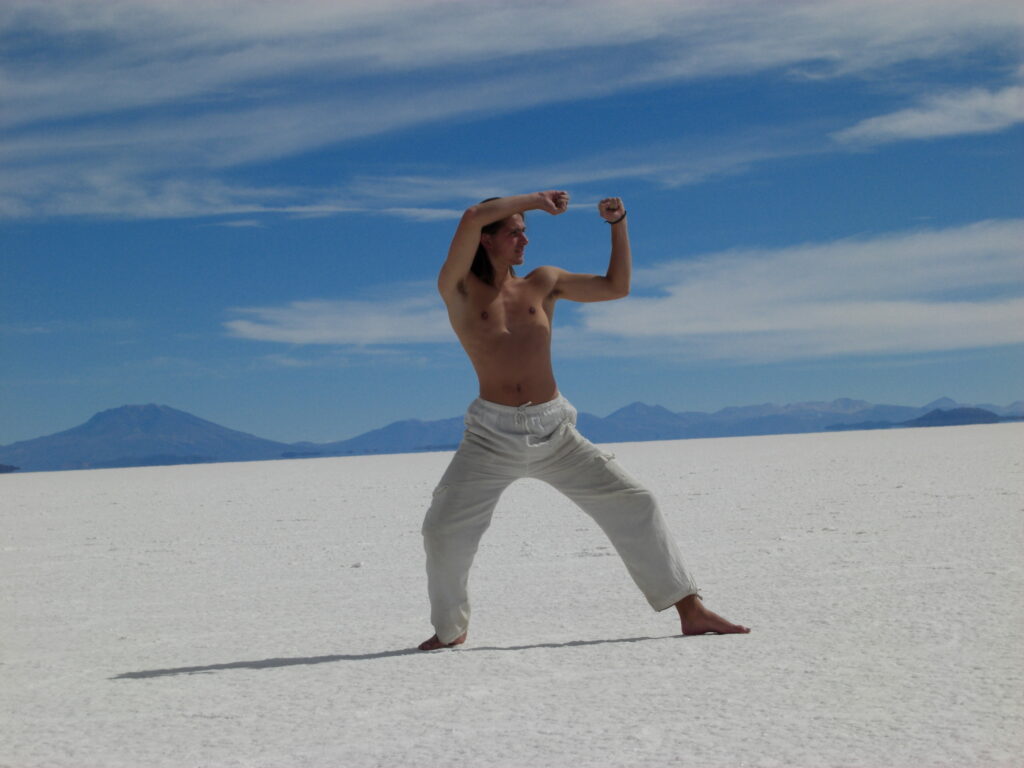John Blakey and Ian Day on what the martial arts can teach us about coaching.
At first glance, what could coaching and the martial arts have in common? Isn't one about unlocking potential in others and the other about defeating opponents in physical combat? Well, yes and no. My colleague, Ian Day and I have been coaching and developing people for many years, we also found another common interest as we both enjoy martial arts. I have practised t'ai chi for over ten years, and Ian practises kendo after doing karate for a long period.
Ian and I use metaphors and analogies in our coaching and through this have found a great overlap with coaching and the mental processes relating to martial arts. Martial arts are as much about psychological processes as they are about physical discipline. It is the mental processes that Ian and I use in our martial arts that are very similar to those used when coaching.
The connection between martial arts and coaching is that both relate to a flow of energy between two partners and how this is consciously directed to achieve desirable outcomes. I would suggest that a coach and a martial artist undergo a common cycle to maximise effectiveness starting with relaxation, which leads to awareness and balance followed by direct interventions, and finally returning to relaxation.
In t'ai chi, all the routines commence with the 'wu chi' stance, a conscious stillness and resting pose. A kendo player starts with mokuso, a short meditation to relax the body and empty the mind in readiness for the session. A kendo player summed up the need for an empty and relaxed mind by saying “…as a paradox, thinking too much is the best way to be hit; not thinking is a great way to react proactively”.
For a coach, stillness, readiness and an empty mind are equally important. To focus on the coachee, the coach needs to leave all his/her mental baggage at the door and be ready with a clear and relaxed mind. A coach can not tune into a coachee if he/she is still focused on their own thoughts and concerns. Prior to meeting a client, relaxation routine might comprise of a cycle of breaths, a simple visualisation, a rolling up and down of the shoulders, whatever is practical given the circumstances and the location.
In stillness, there is unity
Through relaxation comes heightened awareness. A relaxed martial artist is able to radiate his or her awareness from self and expand this to awareness of the others in the room. This shift from internal awareness to external awareness ensures that martial artist is ready to respond quickly to external stimuli. Similarly, where the body goes, the mind follows and a relaxed body in coaching leads to a relaxed, empty mind that is free to become more aware of the present moment and what the coachee is saying and how, and what the coachee is not saying, and the energy level in the room.
Blind folded t'ai chi masters can sense the presence and intent of their opponents with the slightest physical contact and advanced kendo players can sense the slightest movement of the opponent and move first. What might a similar level of awareness and 'whole body listening' look like in coaching?
Once the martial arts routine is in full flow, the two parties are engaged in a dynamic exchange in which each is looking to find and maintain their balance as energy swirls around them in physical form. In such a dynamic situation good balance is crucial. A kendo player begins in a stance ready and balanced holding a good posture. If a martial artist is moved off balance then he or she is open for the opponent to win a point.
In coaching, the energy is not physical but the coachee's words can be as sharp as any t'ai chi sword. The coachee can throw the coach 'off balance' by 'hooking' the coach's own thoughts and by distracting or offending. For example, Ian tells of a coaching session when he was thrown off balance when the coachee talked about the suicide of a close relative. For a moment a coach may be only aware of his or her own thoughts rather than being outwardly aware.
A coach needs to be aware of when he or she is knocked off balance and quickly regain a good posture. Like the martial artist, the coach is looking to stay detached and balanced so as to maintain their coaching presence throughout the session. And then there comes the moment when the martial artist, grounded in the soft 'yin' energy of relaxation, awareness and balance, chooses to tense the muscle and consciously direct hard 'yang' energy to impact the opponent through a measured 'strike'.
In t'ai chi these direct interventions are known as 'Fa Jing' and are practiced only by advanced students who have proven their self-responsibility and discipline. Similarly, for advanced coaches who have built a firm foundation of trust and respect with their coachees, the equivalent of the 'Fa Jing' strike is a direct intervention involving honest feedback, a healthy challenge, or a firm hold on the accountability around actions and plans. Martial artists always have an instructor who runs the practice session and stretches the participant physically and mentally. This is similar to a coach supervisor, whose role is to help the coach continuously develop awareness of self and others, to remain grounded and balanced and make measured powerful interventions, and to become the best coach he/she could possibly be.
Martial arts is a journey of constant learning and Ian and I are constantly challenged by our martial arts instructors as well as coaching supervisors which is very healthy and positive. Who challenges you? Every movement in t'ai chi is circular, in kendo and t’ai chi all routines return to the starting point of stillness and relaxation. And so to begin again the gestalt, the cycle, the dynamic exchange of 'yin' and 'yang' energy which in both coaching and martial arts can be graceful, creative and deceptively powerful.
“T’ai chi was born from wu chi, It produces both movement and stillness, And is the Mother of Yin and Yang, In motion, there is separation, In stillness, there is unity, It is not excessive or deficient, Accordingly when it bends, It then straightens.” Wang Tsung-yueh, T’ai Chi Chuan Classics.
John Blakey and Ian Day are Lead Partners with the leadership transformation company 121partners and can be contacted by emailing [email protected] and by visiting www.121partners.com.










